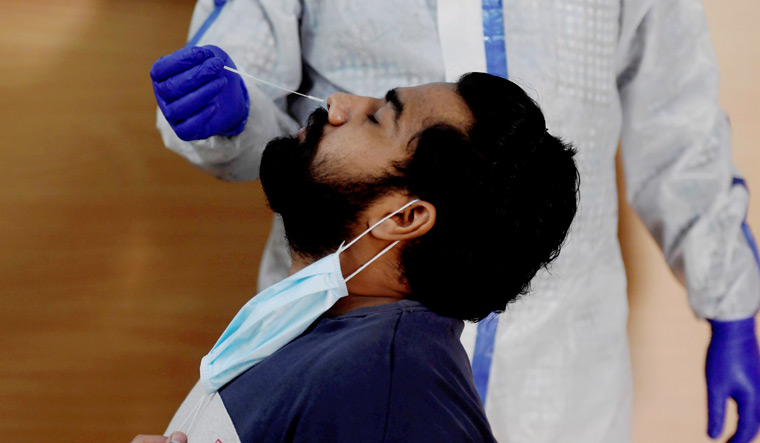The results of the sero-prevalence study in the national capital showed that, on an average, around 23.48 per cent of the population were affected by the coronavirus, according to a ministry of health statement. "The study also indicates that a large number of infected persons remain asymptomatic. This implies the following: Nearly six months into the epidemic, only 23.48 per cent of the people are affected in Delhi, which has several pockets of dense population. This can be attributed to the pro-active efforts taken by the government to prevent the spread of infection including prompt lockdown, effective containment and surveillance measures, including contact tracing and tracking, as well as citizen’s compliance," according to the statement.
However, it added, a significant proportion of the population was still vulnerable and containment measures needed to continue with the same rigour, along with physical distancing, use of face mask/cover, hand hygiene, cough etiquette, and avoidance of crowded places.
Amid rising coronavirus cases in the national capital, a serological survey was undertaken, with 20,000 tests to be conducted across all districts and age groups. The exercise was held between June 27 and July 10. A total of 20,000 tests were conducted across all the districts of Delhi, spanning all sections and ages.
How does the survey work?
A sero-survey involves testing of blood serum of a group of individuals to determine the presence of antibodies against that infection. People from Red, Orange and Green zones in a district will be tested for COVID-19 at random to check if they have developed antibodies against the infection even though they are asymptomatic or show mild symptoms. The survey will involve collection of venous blood samples from 400 randomly selected individuals (one per household) from 10 clusters in each selected district, divided into low risk and high risk groups.
The survey will be conducted at 10 health facilities (six public and four private), testing outpatient attendees and pregnant women (constituting the low-risk group), and frontline healthcare workers (constituting high-risk population).
At least 100 samples of healthcare workers from selected districts will be tested per week (400 per month). Besides, 50 samples each of the outpatient attendees and pregnant women will be collected per week (200 per month). Throat and nasal swabs will be collected for RT-PCR tests and samples should be tested in a one-time pool of 25. "In addition to throat/nasal swabs, blood samples should be collected for detecting Immunoglobulin G (IgG) antibodies for ELISA testing. In subsequent rounds, IgG ELISA-based testing of serum samples will replace RT-PCR based testing for surveillance purpose," according to the official documents.
Data on demographic characteristics will be collected on a specifically designed standard data collection form. The data will be analysed locally for action using standard indicator formats. Indicators for person, place, time and trend analysis will be made.


